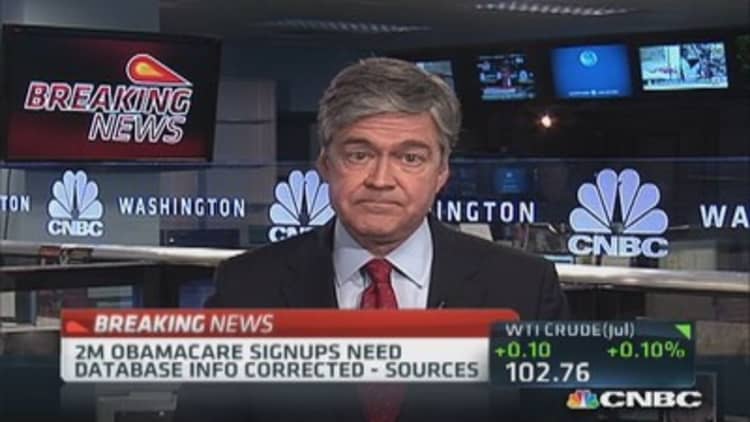Individual health insurance premiums in the years before President Barack Obama signed the Affordable Care Act into law had large average increases and a high variability in rate hikes across different states and insurers, a study released Thursday found.
Nonpartisan foundation The Commonwealth Fund said its findings provide the most comprehensive data assembled to date for use as a benchmark comparison with Affordable Care Act-era price increases, which have begun being released for the 2015 plan year.
The study, which examined the years 2008 to 2010, found that health insurance premiums for people buying coverage on their own—not as part of an employer-provided plan—grew more than 10 percent on average.
The study found that in 2008, premiums grew by an average of 9.9 percent, and by 10.8 percent the following year.
In 2010, premiums grew an average of 11.7 percent. That was the last year that individual insurance market prices were not affected by mandates of the Affordable Care Act, which Obama signed in June 2010.
Read MoreData discrepancies in health signups
The study also found "enormous variation in rate increases across the states."
For example, in 2008, the average premium increase ranged from just 2.8 percent in Iowa to 14.7 percent in Wisconsin. And in 2010, Idaho's individual insurance market had an average premium hike of just 3 percent, but Nebraska's market saw an average premium increase of a whopping 21.8 percent.
There were also big differences in rate hikes within states, according to the study.
In 2008, for example, 10 percent of the people enrolled in plans had no rate increase, while 10 percent faced increases of 17.8 percent or more.
Such wide variances were due, in part, to the fact that before the Affordable Care Act, insurers in the individual market could deny coverage to people with pre-existing health conditions, and could also charge them a higher rate than healthier customers.
Jonathan Gruber, an MIT professor who conducted the study, noted that the data "is not perfect," because it's based on premium increases reported in just 30 states collected by the National Opinion Research Center. Premium data from other states was not publicly available for that time frame.
Read MoreMerck proud to be US based: CEO
But Gruber said he believes the study's findings are strong, because there is no evidence that the data is biased because of the limited sample size.
The study comes as insurers who sell plans through the health-care exchanges have begun to submit proposed premium rates with state regulators for the 2015 plan year.
In Connecticut, two insurers selling policies on the state-run health-care exchange are asking to raise their premiums by more than an average of 10 percent, but the third insurer proposes dropping its rates by an average of 8.9 percent.

In Arizona, Cigna wants to hike its rates an average of 14.4 percent. Humana is asking for a whopping 25.5 percent average increase, according to the Arizona Republic.
Insurers selling policies through Virginia's health-care exchange have proposed average premium increases that range from a low of 3.3 percent to a high of nearly 15 percent.
Read MoreMedicare billing errors cost taxpayers
Gruber said Thursday's study shows "we shouldn't make too much of any one insurance filing, or even state averages."
The study also argues that the report card on the health-care law's effect on premiums should be issued only after all rates are set nationally.
—By CNBC's Dan Mangan


